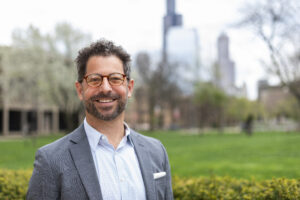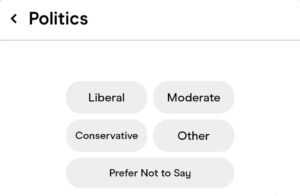Submitted on Mon, 04/30/2007 – 15:16.
Story by Stacie Johnson
Elvira Arellano took sanctuary in August 2006, mirroring a movement that began in Chicago over 20 years ago called Sanctuary.
Arellano took sanctuary after facing orders for deportation from immigration officials. In protest, she sought refuge in Adalberto United Methodist Church in the Humboldt Park neighborhood on Chicago’s near Northwest side.
“Sanctuary allowed Elvira Arellano to speak,” said Rev. Slim Coleman, pastor of Adalberto Church where the Mexican immigrant has lived more than eight months. “[It] gave an opportunity for the undocumented to speak about how they viewed the situation, and what the truth of the situation really was.”
According to the Pew Hispanic Center, there are an estimated 12 million immigrants living in the United States illegally. Arellano and her son represent the estimated 3 million mixed-status families currently living in this country, according to the nonpartisan research organization.
Coleman said during a presentation at the Jane Addams Hull House Museum in Chicago the steps Arellano took were important because before last summer, everybody but the undocumented were speaking for the undocumented immigrant.
“There may be some very well intentioned individuals, but they all have their own agendas as well,” Coleman said. “And that’s one of the things that’s complicated this issue and allowed it to get off-focused.”
Arellano decided to take an act of civil disobedience, according to Coleman, against her order of deportation scheduled to take place the day she took sanctuary, Aug. 15, 2006.
Arellano and those before her in the original Sanctuary Movement took a stand against the U.S. government and not the religious leaders or the churches.
Almost two decades before, refugees from El Salvador and Guatemala began doing the very same thing. These Central American refugees had entered the U.S., often times illegally. The difference was these immigrants were fleeing war and the resulting persecution and violence in their countries.
In 1980, a Presbyterian church and a Quaker meeting in Tucson, Ariz., started providing humanitarian and legal assistance to these refugees. Two years into this effort, none of the refugees being assisted had been granted political asylum. So, Rev. John Fife, a Presbyterian minister responsible for co-founding this movement, announced that his church was going to openly defy INS and become a “sanctuary” for Central Americans.
Shortly after this announcement, the network in Arizona could not provide sanctuary or services for all the people who were asking for help, so it began looking to other states and other congregations to help. Activists from northern California, south Texas and Chicago joined in solidarity with the network in Arizona. And the Sanctuary Movement was born.
Michael McConnell, executive director of the American Friends’ Service Committee (AFSC) and former organizer of the Chicago contingent of the Movement, says Arizona became an entry port or processing center for many of the refugees. Then they were relocated to one of the hundreds of churches and synagogues who agreed to provide assistance in Chicago, Los Angeles and later Philadelphia. Nearly 500 churches participated.
McConnell says it took a lot of organizing to convince faith leaders and the congregations to open their churches or synagogues to helping these immigrants. He says that a lot of resources went into helping individuals in sanctuary, and that need doubled with each additional person. A family in refuge, organizers found, often needed the support of several churches.
“Refugees would stay in these churches for a few months at a time,” McConnell said. “And during that time they needed not only food and clothing, but there were transportation costs, healthcare costs, and costs associated with 24-hour security for the building, and so on. When you add in factors like the person is married or has children, then that number is multiplied. And you must realize that most of these costs were handled by the congregations themselves.”
McConnell said for these reasons, most congregations only signed up to help one family only or as many as two refugees a year.
At the Sanctuary Movement’s height in the mid 1980s, according to Migration Information Source, “over 150 congregations openly defied the government, publicly sponsoring and supporting undocumented Salvadoran or Guatemalan refugee families,” and another 1,000 endorsed the concept and the practice of sanctuary.
Some workers with the movement worked with Mexican activists to smuggle in Guatemalans and Salvadorans across the border.
The U.S. Department of Justice responded with a criminal prosecution against two activists in Texas in 1984, and in 1985, the federal agency pursued a 71-count criminal conspiracy indictment against 16 U.S. and Mexican religious activists.
The Texas trials resulted in split verdicts, one conviction and one acquittal. All the Arizona defendants were convicted, but none were sentenced to jail time. After the trials, the movement continued, but the Justice Department did not prosecute any more criminal indictments of sanctuary activists.
So far, immigration officials have not taken any action against Arellano, who is living in an apartment above the Westside Chicago church.
McConnell says the Sanctuary Movement dissipated in the early 1990s after refugees began receiving asylum. At this point, several court cases ensued, including one brought by the American Baptist Churches, over the rejection of Central Americans being continually denied protection in the United States. Under the settlement of the American Baptist Churches litigation, many were allowed to stay.
The face of the immigrant seeking sanctuary has changed since the early 1980s when the Sanctuary Movement began. Currently, the immigrants who have entered the country illegally, though they represent many parts of the world, are largely from Mexico. Additionally, their reasons for leaving their country are not due to civil war or violence but because of economics.
There are some organizers across the nation building a New Sanctuary Movement, which has its own web site. This effort is underway in response to the increased orders of deportation, raids and the demand for immigration reform legislation. But there is scant information about how many congregations are involved and in what stage the movement is in.
Organizers contend that they are working hard to identify religious centers, ways to identify which families to assist and which cities will be part of the movement. At least in the initial stage that includes Chicago, Los Angeles and New York.
McConnell and many other organizers of the original movement are not involved at all in the current discussion of the New Sanctuary Movement. Also, some immigrant rights supporters are not supportive of the idea of sanctuary for undocumented immigrants.
Julie Santos, co-chair for United Voices for United Families, an group that advocates for mixed-status families, says although she understands what Arellano is attempting to do, she is not sure it is the most effective method.
“I want the best for Elvira and she knows that,” Santos said. “But [taking sanctuary] is not the best thing for our families. All of our families cannot do as she has done. … We just don’t see how taking sanctuary in a church will help all the millions of families living with the same realities as Arellano’s family. We don’t want to hide, and our families are not for negotiations.
Categories:
Public Religion & Spirituality
Tags:
arellano humboldt park immigration oleman sanctuary






Be First to Comment